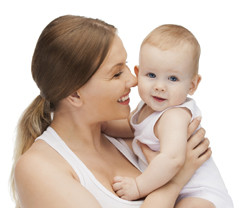How do babies combine mental representations?
The 'Compositionality in infants' (COIN) project investigated the ability of young infants to combine mental representations. Researchers aimed to determine whether prelinguistic infants have abstract representations of the relational concepts of 'same' and 'different' before their understanding of the corresponding words. The team also endeavoured to learn if different is represented as negation of the concept of same, and whether the acquisition of linguistic symbols is a prerequisite for compositionality to emerge. Researchers tested whether 14-, 18- and 24-month-old babies could learn that a dog picture means an object will appear on the screen to the right and that a car object means an object will appear to the left. Very few infants learned the predictions made by both cars and dogs. Overall findings confirmed the hypothesis that babies cannot learn two concepts in parallel, but no conclusion can be made about the ability or inability of babies to represent the relation different. Adapting the Match-to-Sample (MTS) and Mismatch-to-Sample (mMTS) paradigms typically used in animal experiments, COIN tested whether infants interpreted different as a discrete concept or as 'not same'. An anticipatory looking version of these tasks was developed to test the subjects with an eye tracker. Results from various studies indicate that 14-month-olds can learn to succeed both in the MTS and mMTS, and that they represent the abstract relational concept same. However, no evidence was found that they represent (or use) the concepts different. The project also explored the development of the understanding of the words same and different, as well as the link between the acquisition of these words and manipulation of the corresponding concepts in a non-verbal task. Findings suggest that children understand the words same and different between the ages of three and four years, but they cannot flexibly use the two concepts before the age of five. An improved understanding of how compositionality develops in human infants will afford a better understanding of human nature. COIN found no evidence for compositionality in infants before they acquire the relevant words. Continuing work in this area thus aims at advancing knowledge on how infants' conceptual representations change when words are acquired, and how compositionality emerges.




